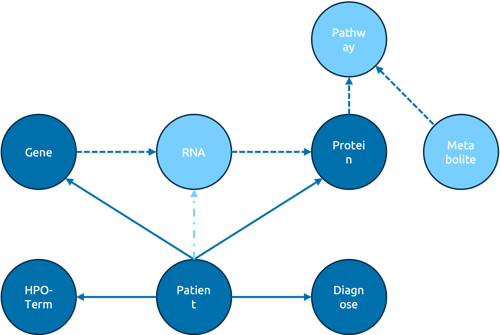Graph Data Model
Graph data model is a widely used framework to describe and analyze relationships between entities in a dataset. In a graph data model, data is organized into nodes representing objects or entities in a dataset, and edges representing the relationships between the nodes. A node can have attributes or properties describing its characteristics and an edge can be directed, undirected or bidirected to give a more accurate description of the relationship.
Graph data models are particularly well-suited for modeling complex networks, such as social networks, biological networks, transportation networks, and knowledge graphs. They enable efficient querying, traversal, and analysis of interconnected data, allowing for the discovery of patterns, insights, and dependencies within the dataset.

Knowledge Graph
A Knowledge Graph is a representation of a knowledge domain using the graph data model, readable by both humans and machines.
Knowledge graphs are used to model complex information in a way that can be easily understandable. They can use ontologies (e.g., human phenotype ontology) to define the vocabulary and structures of classes, properties and relationships in a domain knowledge to ensure consistency and allow compatibility between different graphs.
To learn more about graph data modeling and gain some hands-on experience, you can take the free graph data modeling fundamentals course at Neo4j Graph Academy.